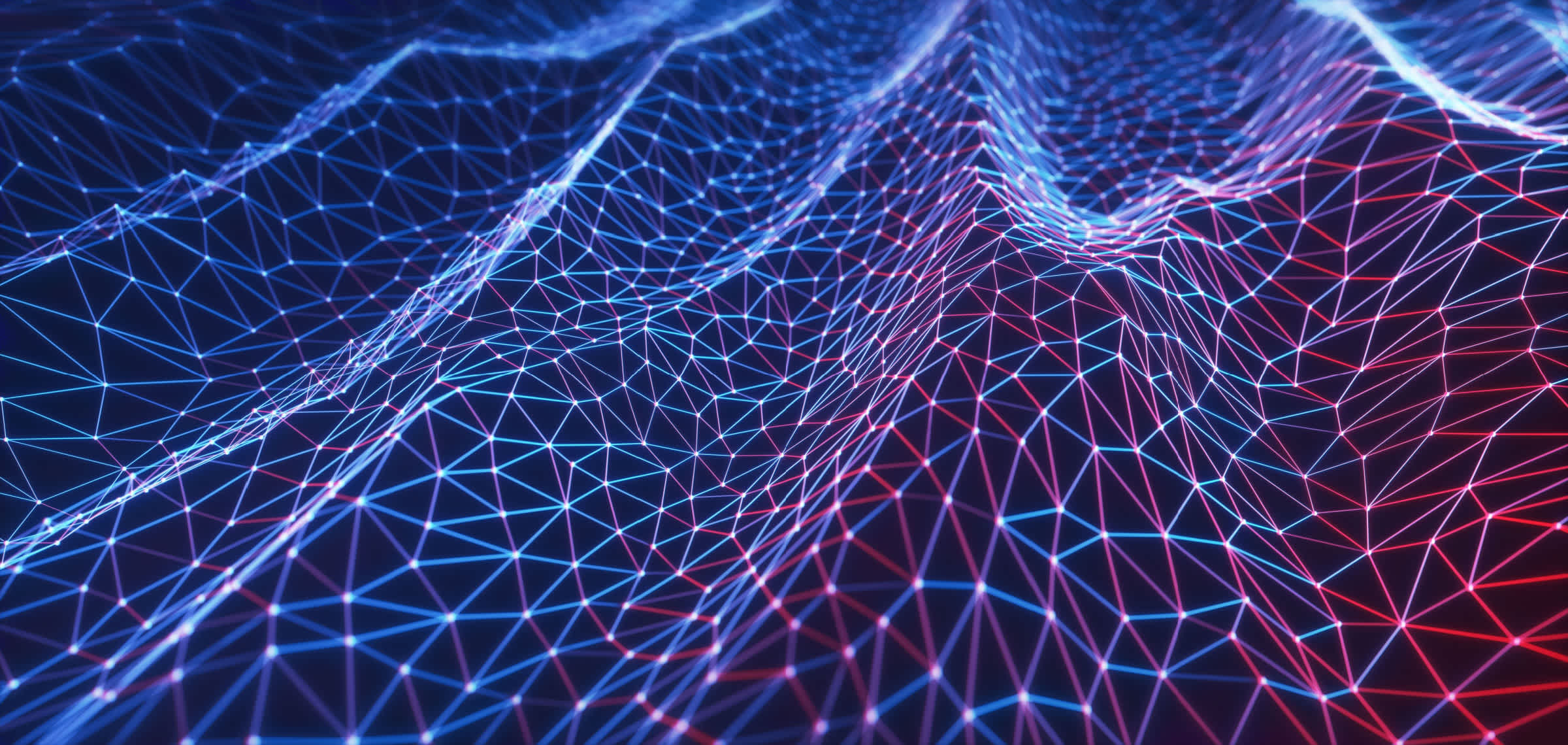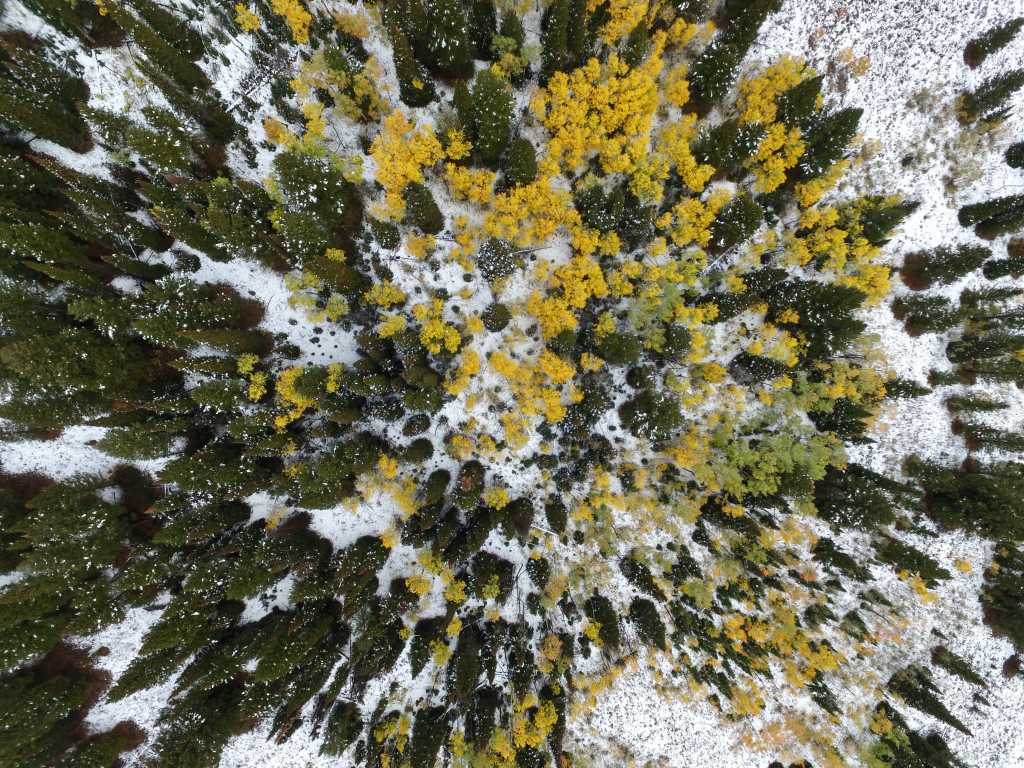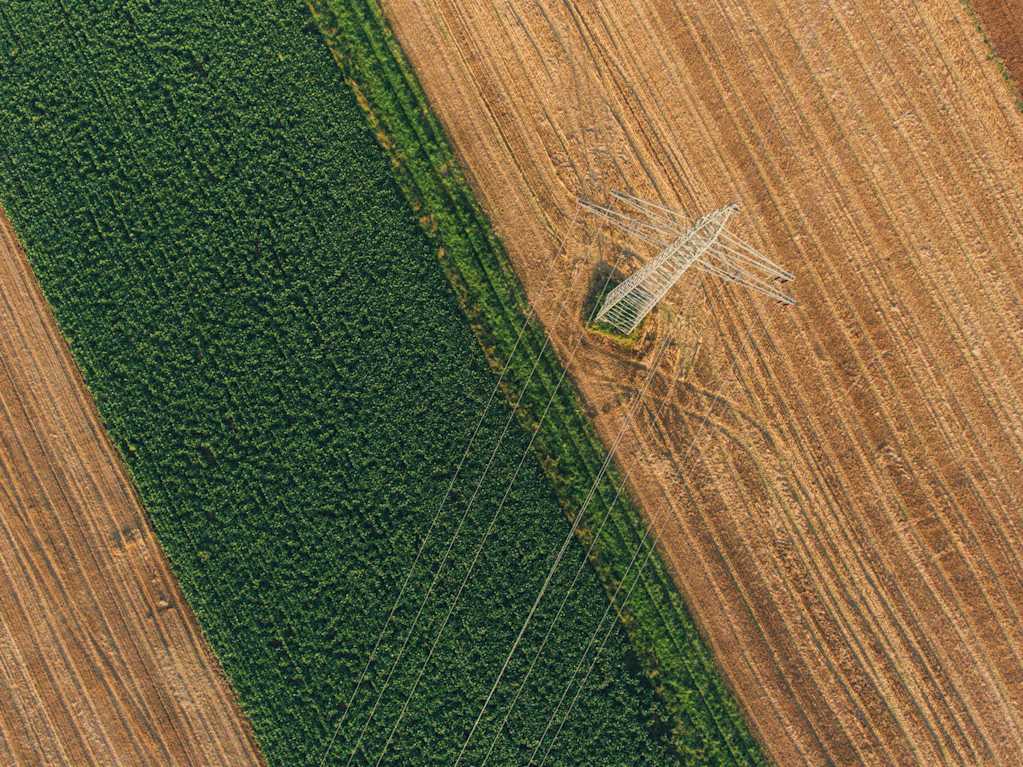The defining feature of LiDAR is its ability to capture highly accurate 3-dimensional data, even in vegetated areas like forests and grasslands. The myriad of LiDAR applications is a testament to its importance.
But sometimes, LiDAR can't provide all the answers. The question is: could incorporating satellite imagery fill in some of those gaps?
That's the subject of this article. Here, we'll explore how satellite imagery improves LiDAR applications. But first, let's get familiar with the term LiDAR.
What is LiDAR?
Light detection and ranging (LiDAR) is an active remote sensing technology that maps the Earth’s surface. It measures distances (or ranges) based on the time difference between the emission and reflection of a laser pulse from the sensor to the target.
The measured ranges are combined with sensor position, orientation, and calibration data (along with other factors) to produce a point cloud. A point cloud is a collection of points each with three-dimensional spatial coordinates, i.e., longitude, latitude and height. The points may contain additional attributes like intensity and return number.
There are 3 main types of LiDAR platforms: spaceborne (satellite), airborne, and ground-based.
Why is LiDAR classified as an active remote sensing technology?
LiDAR is an active sensor because it does not depend on an external source of energy to gather data. Rather, it emits electromagnetic radiation and then detects the returning energy from the target. This is in contrast to passive sensors which do not emit energy but rely on reflected solar or terrestrial energy.
The main advantage of active sensors is that they can operate both day and night.
Note: In theory, we can collect LiDAR data at night. In practice, however, airborne LiDAR data is normally collected concurrently with image data, eliminating this benefit.
How does LiDAR penetrate through vegetation?
LiDAR does not penetrate through vegetation per se. LiDAR pulses pass through the gaps in vegetation. The more gaps there are in the canopy, the higher the probability that the LiDAR pulse will get to the forest floor. The more dense the vegetation, the lower the probability.
Other factors that affect LiDAR penetration through vegetation include:
-
The density of the LiDAR points (points per square meter)
-
The power of the beam
-
The scanning angle
For vegetation applications, one emitted pulse usually results in multiple reflections. The first return is normally the top of the canopy, whereas the last returns are usually the ground. The last returns can also come from the understory (the layer of vegetation beneath a forest canopy).
What is the wavelength frequency of LiDAR?
LiDAR sensors collect data in the visible green (532 nm) and/or near-infrared (1064 nm) portions of the electromagnetic spectrum.
Those operating in the near-infrared (NIR) region are known as topographic LiDAR and are ideal for land and vegetation studies. Topographic LiDARs, however, are unsuitable for water applications because water absorbs NIR wavelengths.
LiDAR sensors for water applications, therefore, operate in the green region of the electromagnetic spectrum. Green laser beams can penetrate clear water to map the seafloor. These kinds of sensors are called bathymetric LiDAR.
Topographic-bathymetric LiDAR systems, on the other hand, use both green and NIR laser beams, enabling them to map both land and water.
LiDAR vs satellite imagery
Satellite imagery refers to images of the Earth's surface captured by satellite-borne sensors. The most common satellite images are optical and synthetic aperture radar (SAR).
Optical images are a passive remote sensing method, whereas SAR is an active remote sensing method.
What is optical imagery?
Optical imagery refers to images collected in the visible and NIR portions of the electromagnetic spectrum. Depending on the number of bands, optical imagery may be classified as panchromatic, multispectral, or hyperspectral.
Optical images can also be classified as monoscopic or stereo images. Monoscopic images refer to the capture of only one image over an area. In contrast, stereo images consist of two or three images of the same area captured from different viewing angles to facilitate the generation of 3-dimensional elevation models.
The table below shows how optical imagery compares with LiDAR data.
| LiDAR data | Optical imagery |
|---|---|
| Horizontal accuracy is worse than vertical accuracy. | Horizontal accuracy is better than vertical accuracy. |
| Poor in semantic information. | Rich in semantic information. |
| Is irregularly spaced and may not contain information along feature edges. | Contains data along feature edges or break lines. |
To find out more about optical satellite imagery, check out our detailed guide.
What is SAR imagery?
SAR images are those captured in the microwave portion of the electromagnetic spectrum. As such, the visual interpretation of SAR images proves challenging when compared to optical images. Nevertheless, SAR images contain useful information like surface roughness or moisture content---which are important in various LiDAR applications.
Discover the benefits of combining SAR and optical satellite data.
How do LiDAR applications benefit from satellite imagery?
Considering the characteristics of LiDAR data and satellite images, the integration of satellite images in LiDAR applications can be incredibly beneficial.
While LiDAR is an active sensor and can therefore collect data both day and night, the resulting point cloud lacks semantic information like shape, texture, and spectral response---limiting their interpretation. Satellite images, on the other hand, are rich in semantic information.
But that's not all. Satellite images also boast wide-area coverage, consistent data capture, and long-term archives, which could further improve LiDAR applications.
With this backdrop, let's take a closer look at how satellite imagery contributes to different LiDAR applications.
Satellite imagery improves automatic building extraction from LiDAR data
According to the World Resources Institute, by 2030, 70% of the world's population will live in cities. Therefore, accurate mapping and 3-dimensional modeling of urban infrastructure is important to support various applications, including planning, tourism, disaster management, flooding prediction, urban heat island effect estimation, etc.
Automated building extraction first calls for building detection–or recognition of the existence of buildings–and the delineation of building boundaries. LiDAR data offer several advantages in this regard:
-
LiDAR point clouds contain accurate height information which is useful for identifying different buildings and other urban features.
-
As an active remote sensing technology, LiDAR is unaffected by shadows, reducing data gaps in shadow areas.
-
LiDAR 3D point clouds enable the extraction of geometric properties like surface roughness, which helps to distinguish between urban features.
-
LiDAR data is unaffected by relief displacements (the distortion between an object's lowest and highest point), unlike optical images or SAR, enabling the extraction of buildings in their correct position.
That said, LiDAR still has shortcomings.
First, LiDAR data has limited spectral information, which is important because urban features are complex and exhibit high spectral variations. Therefore, effectively discerning buildings from other urban features often necessitates knowledge of their spectral properties.
The integration of multispectral image bands in the building extraction process, therefore, improves building classification.
Second, LiDAR point clouds are irregularly spaced, making it difficult to define building outlines with precision. This problem is even worse in LiDAR data with a low point density. But outline detection is important because automatic building extraction demands the identification of a sufficient amount of modeling cues (e.g., lines, corners and planes) representing the main components of a building structure.
Optical satellite images capture the straight lines that define the outlines of buildings, improving the results of automatic building extraction from LiDAR data. Over and above that, satellite imagery enables the digitization of reference data for model training and testing of LiDAR-based building extraction algorithms.
Ultimately, satellite imagery improves the robustness of automatic building extraction from LiDAR data.
Satellite imagery improves vegetation and forest structure analysis using LiDAR data
The penetration capabilities of LiDAR data facilitate highly accurate estimates of vegetation properties and underlying topography. Therefore, LiDAR is a valuable tool for the management, preservation and restoration of forests.
At the individual tree level, LiDAR data enables the extraction of individual tree parameters like position, height, and crown width. But we have to identify the individual trees first. How do we achieve this? By accurately delineating tree crowns. And for this, high-density LiDAR data is required.
The problem is, high-density LiDAR data may not be available, and even if available, it's challenging to identify individual trees from tightly grouped clusters.
Luckily, incorporating very high resolution satellite imagery facilitates tree crown detection and consequently increases the accuracy of individual tree extraction from LIDAR data. Furthermore, multispectral images help in identifying the tree species.
At the forest stand level, LiDAR accurately captures the vertical distribution characteristics of trees. Conversely, optical satellite imagery captures horizontal distribution characteristics like forest areas. Their combination, therefore, gives a full picture of forest canopy attributes and dynamics.
Moreover, the fusion of LiDAR and satellite imagery provides more parameters to statistical models relating LiDAR data to forest variables like basal area, volume, or biomass–which may improve model accuracy and the resulting predictions.
In addition, SAR satellite imagery contributes to frequent forest monitoring in areas where LiDAR data collection is restricted by poor weather.
Satellite imagery complements shoreline mapping using LiDAR Data
Approximately 10% of the world's population lives in coastal areas that are less than 10 meters above sea level. Considered alongside sea level rise projections, large populations are at risk of flooding, underscoring the importance of shoreline mapping.
Shoreline mapping is also important for marine navigation, storm vulnerability analysis, habitat mapping, and legal boundary determination.
To this end, LiDAR data is applied for shoreline mapping, albeit with several difficulties.
First, LiDAR data for shoreline mapping usually needs to be collected within a specific time range, when the water is below a specific tidal level. Shorelines are in a state of constant flux, so this leaves a very narrow window within which to collect reliable data.
Second, it is hard to collect and update LiDAR data regularly in areas that frequently experience adverse weather. This problem is exacerbated in areas with rapidly changing shorelines, e.g., due to coastal erosion or sedimentation, that require frequent monitoring.
Third, mapping and updating shoreline data at scale is expensive and logistically difficult.
All in all, while LiDAR provides accurate shoreline positions, the need to capture data in specific time and weather windows, combined with the extensive length of coastlines, makes shoreline mapping using LiDAR challenging.
Further, used alone, topographic LiDAR doesn't enable the identification of slightly submerged rocks along the coastline. This is because it operates in the NIR region, which is highly absorbed by water.
Satellite imagery offers an improved but partial solution to some of these issues.
Optical satellite imagery captures both green and NIR spectral bands. Therefore, used with topographic LiDAR, it enables the identification of slightly submerged rocks along the coastline and facilitates the clear delineation of the land-water interface.
Aside from distinguishing land from water, the multiple spectral bands provided by optical satellite imagery enable the classification of shoreline features, such as marsh, mangrove, cypress, buildings, etc.
Satellites also offer the advantage of repeat passes, which is important in analyzing changes in coastal processes and features. Further, their wide-area coverage enables detection and monitoring of the shoreline at local, national, or regional scales.
Take the animation below, for example. It shows a time series of a satellite-derived shoreline using Landsat-8 imagery spanning from 02/15/2015 to 09/11/2021.
Source: USGS
SAR and thermal imagery facilitate shoreline mapping, too.
SAR imagery enables all-weather coastal mapping. Consequently, they could be applied for coastal areas with persistent cloud cover, which hampers LiDAR data collection and reduces the availability of suitable optical imagery.
Satellite thermal imagery, on the other hand, captures surface temperature differences between land and water. How is this useful for shoreline mapping?
Water surface temperatures are usually lower than the adjacent land during the day, and higher than the adjacent land at night. This contrast in temperatures aids in shoreline extraction.
Note: The time of image acquisition, currents, season, atmospheric conditions, etc. are factors that can affect temperature differences between land and water, and should thus be considered when using thermal images for shoreline mapping.
In the end, satellite imagery offers a cost-effective and regular dataset for shoreline mapping at large spatiotemporal scales. It is a complementary approach to support the more precise LiDAR-based shoreline mapping.
Find out how satellite-derived bathymetry enables coastal monitoring and protection.
Satellite imagery improves crop-type mapping using LiDAR
Agriculture is paramount for human life. Today, agricultural practices have to meet multiple goals: environmental sustainability, climate change mitigation, feeding a rising population, and remaining economically viable, among others.
Since LiDAR remote sensing is a non-destructive way of temporally and spatially monitoring agricultural fields, it can be used to achieve these goals. Consequently, there are diverse LiDAR applications in agriculture. One such application is crop-type mapping. Accurate crop-type maps are important for estimating harvests and precision agriculture.
LiDAR data captures accurate crop heights. Therefore, when the height difference between classes of crops is significant, they can be distinguished on the basis of height. Nevertheless, for areas with homogeneous or indistinct height patterns, using LiDAR data as the only input could lead to misclassification.
Different crop types exhibit unique spectral signatures. Combining LiDAR data with satellite imagery, therefore, helps to differentiate between different crop–improving classification results.
In a similar fashion, combining LiDAR and satellite imagery in areas where crop types exhibit similar spectral signatures but have different heights also improves crop-type classification.
Further, satellite images are more frequently updated as compared to LiDAR data and could, therefore, prove to be a cost-effective means of crop-type mapping and monitoring.
Overall, where the different crops have distinct height differences, you can use LiDAR data to classify them. Even so, the addition of satellite images could improve classification accuracy.
Beyond crop-type mapping, satellite data plays a huge role in agriculture. Find out more:
Satellite imagery complements LiDAR data applications in archaeology
The Earth's surface has been shaped by generations of people who have dug into or built structures upon it. Over time, the evidence of past human activities has been covered up by natural processes like vegetation growth or by humans for subsequent land exploitation.
Nevertheless, in some places, evidence of past activity still survives. Archaeology aims to unearth this evidence in a quest to understand human history. It also facilitates the conservation of archaeological sites and landscapes.
To this end, LiDAR canopy penetration abilities facilitate the discovery of archaeological features like roads, building foundations, and walls obscured beneath the vegetation. An example was the use of LiDAR to reveal ancient Mayan ruins.
Further, the high vertical accuracies provided by LiDAR enable the generation of high-resolution terrain elevation models. Such detailed representation of the topography may reveal patterns that identify archaeological sites in both forested and non-forested areas.
But we don't always have to peer below the forest canopy to identify archaeological sites.
Archaeological sites buried beneath the surface can affect the water content, organic matter, nutrient composition, etc. of the soil. These factors may affect the vegetation growing above them.
For example, vegetation growing on buried hollows and ditches which retain water may be taller or greener, while those growing over stones or roads may be stunted and less green. Such areas of observed vegetation differences are known as cropmarks.
Difference between positive and negative cropmark. (Source: El-Behaedi, R. Detection and 3D Modeling of Potential Buried Archaeological Structures Using WorldView-3 Satellite Imagery. Remote Sens. 2022, 14, 92. https://doi.org/10.3390/rs14010092) (CC-BY-4.0)
To the trained eye, cropmarks can be spotted on optical satellite imagery, especially in fields with homogeneous vegetation types. Cropmarks may also be indirectly inferred from vegetation indices extracted from multispectral satellite imagery. For example, using the Normalized Difference Vegetation Index (NDVI) to detect the patterns of variation in greenness.
As a result, due to their near-global coverage, satellite imagery enables wider-scale prospecting and discovery of archaeological sites–beyond the areas covered by LiDAR data.
Aside from optical satellite imagery, SAR imagery sensitivity to surface moisture content could also contribute to revealing cropmarks. Further, SAR signals can penetrate soils to a certain extent and detect buried archaeological remains.
As we saw earlier, topography plays an important role in the detection and discovery of archaeological sites. As such, elevation models derived from stereo satellite imagery or SAR data (e.g., WorldDEM Neo) could further complement these efforts.
In addition to prospecting, the repeatability of satellite imagery collection enables the monitoring and maintenance of pre-historic sites. For example, SAR interferometry techniques like differential interferometry (DinSAR) enable deformation monitoring of archaeological monuments.
In a nutshell, satellite imagery complements LiDAR-based archaeological studies at two levels:
-
Detection and discovery of new archaeological sites
-
Monitoring and maintenance of existing archaeological sites
Ready to leverage satellite imagery in your LiDAR applications?
Could incorporating satellite imagery into your LiDAR applications improve your insights?
As we've demonstrated, the answer is yes.
Despite its many strengths, LiDAR has limited spectral information, is not readily available in most parts of the world, and is expensive to collect repetitively. In contrast, satellite images measure reflectance characteristics, have near-global coverage, and are collected consistently.
In short, the synergistic use of LiDAR data and satellite imagery could uncover insights that neither LiDAR nor satellite imagery can uncover alone.
Stuck on how to leverage satellite imagery in your LiDAR applications? Reach out to us so we can answer your questions.




